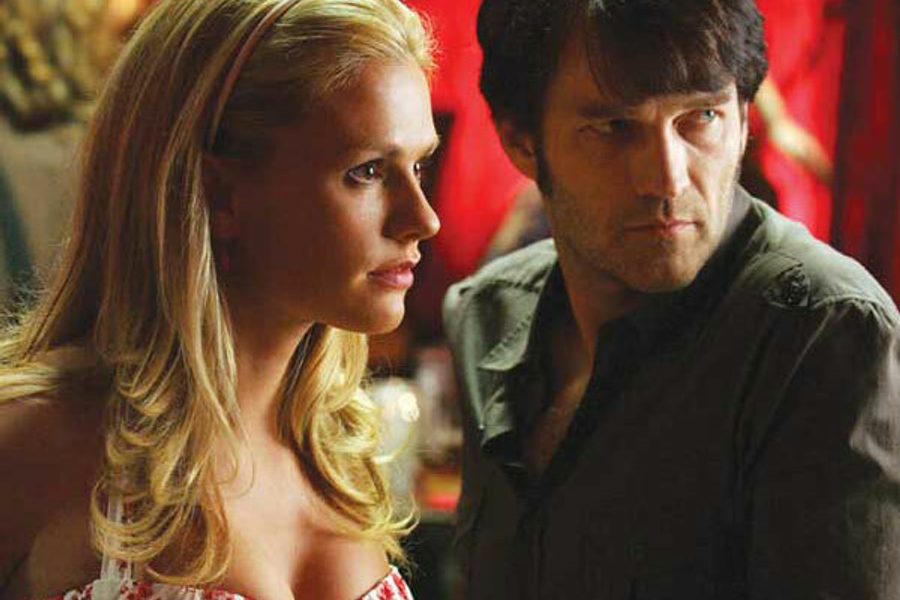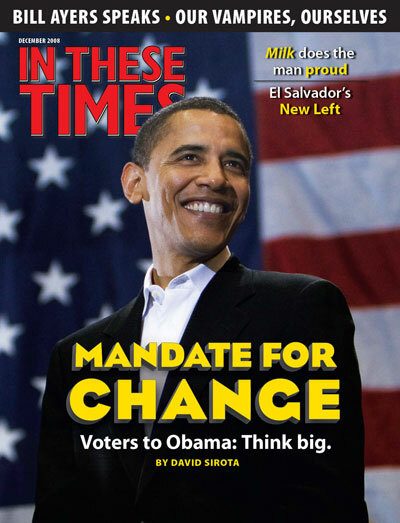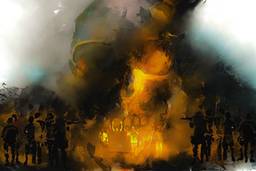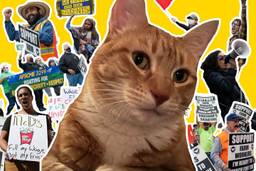
Welcome to Bon Temps, La., where all the women are innocent, all the men have secret obsessions and all the vampires – save for a few – try to recapture their lost humanity. A small, swampy, fictional town set deep in (ahem) “real America,” Bon
Temps is the central locale in HBO’s frothy new vampire series, “True Blood.”
The series centers on Sookie Stackhouse (played by Anna Paquin), a wide-eyed waitress and reluctant telepath who hears other people’s thoughts on a constant loop. Despite suffering the ritual abuse of growing up “different” – that is, a mind reader – in a small town, Sookie has managed to maintain her natural sweetness and charm. She’s also learned to be emotionally resilient and incredibly open-minded.
These, it turns out, are handy qualities to possess when the undead move into town.
Thanks to the creation of a synthetic blood beverage, Tru Blood (available in flavors A, B, AB and O), which meets all the nutritional needs of the undead and frees them from their dependence on human blood, vampires have “come out of the coffin” and have started mainstreaming into society.
Two years and the advent of a broad vampire-rights movement later, the first vampire, 173-year-old Bill Compton (played by Stephen Moyer), arrives in Bon Temps.
Most residents greet him with wariness and mistrust. Some are openly hostile. But not Sookie. She’s more than tolerant – she’s ecstatic to have company as the resident outcast. As far as she’s concerned, Bill’s arrival is something to celebrate. Laissez les bon temps roulez!
From this main premise – Exotic Other meets Fellow Outsider and together navigate a repression-filled backwater – show creator Alan Ball has spun both detailed fantasy and thoughtful commentary on nearly every pressing issue in modern cultural discourse.
These issues include, but are not limited to, gay rights, civil rights, racism, sexism, tokenism, regionalism, mysticism, cultural exploitation, drug culture and AIDS issues – and whether or not alcoholism can be cured by drowning a demon-addled possum.
In lesser hands, a show this dense might crumble under the weight of its own dogma. But Ball, an Emmy-Award-winner for his groundbreaking series “Six Feet Under,” never forces issues down the viewer’s throat. He lets meta-messages surface, has a bit of fanged fun with them, and then kicks them back to the sidelines so he can focus on the show’s more serious concerns – fantasy, suspense and good old-fashioned vampire sex. (In one episode, a patron at the local watering hole where our protagonist is a waitress remarks, “I read in Glamour that everyone should have sex with a vampire at least once before they die!”)
Yet something about this airy snack of a show sticks to the bones and satisfies the viewer’s hunger for deeper meaning. The secret is perhaps in the blood – human, vampire and synthetic.
Never mind being free from feeding on humans, “True Blood” vampires still crave the real thing, because it’s better, more satisfying and more connected to the humanity they need in order to become mainstream.
Other vampires have gone rogue, rejecting humanity and celebrating their monster qualities. They kill humans not to gain access to more humanity, but to vanquish it.
Similarly, the show’s humans have discovered that, depending on dose and origin, vampire blood has manifold affects on the human body. Called “V” for short, vampire blood drunk in excess – and from the right vampire – can heal fatal wounds. Taken as a single drop, V mimics the psychotropic affects of Ecstasy. Taken in a midsize amount, say a vial-full, V acts like a black-market Viagra, causing a day’s-long erection and other embarrassing medical emergencies.
Whichever way the blood is flowing, a great deal of dependence – some might even say co-dependence – exists between human and vampire. And the dependence isn’t just physiological. The way each group approaches the other – with mistrust, skepticism and no small degree of fetishism – belies a prurient and all-consuming fascination with who and what each groups thinks it is – and is not. (“I’m human, and not like you!” “I’m the undead, and nothing like you).
So determined is each group to cast difference and doubt in the direction of The Other, that each fails to notice the time and energy devoted to the very group it scourges.
Jason Stackhouse (played by Ryan Kwanten), Sookie’s mortal, horndog brother, most personifies this dependence on The Other. When we meet Jason, we learn he has a rapidly burgeoning fetish for vampire sex. He doesn’t want to have sex with a vampire – not yet, anyway – but he has sex with fangbangers – people who have sex with vampires (and, incidentally, my new favorite word).
Jason watches homemade vampire porn, and starts dressing as a vampire during sex. Before long, his friend and drug dealer, Lafayette, introduces him to V, and a whole new dependence is born. For Jason, V is highly addictive. So much so that he can no longer live without it.
His connection with vampires isn’t healthy (which is the case with most long-repressed, socially frowned-on secret obsessions) but it is vital and, increasingly, necessary.
The larger point is not only the degree to which we depend on Otherness to shore up and shape our own lives, but also the degree to which Otherness isn’t so “other” after all. For most of the characters in “True Blood,” the scariest part of coming face-to-face with a vampire is that it’s like looking in a mirror. I am vampire, and she is me.
Early on, Bill asks Sookie if she is afraid to be alone with a hungry vampire. She says no. He responds, “Vampires often turn on those who trust them, you know. We don’t have human values like you.”
To which Sookie replies, “A lot of humans turn on those who trust them, too.”
Later, after a brush with death, Sookie wonders aloud if she should be spending time with someone so different. Bill explains that humans and vampires are not so dissimilar: “How we work is magic, Sookie, and my magic just happens to be a little bit different than yours. But it is magic all the same.”
In a year when a person who personifies many Americans’ definition of Otherness has ascended to the highest office in the land, and in a political race where racial fears and sexism and ageism and many other “-isms” bubbled to the surface, the meta-message of “True Blood” seems more apropos than supernatural, more banal than farfetched.
Our call as viewers, it seems, is to welcome the vampire who returns our gaze, to embrace and celebrate the otherness we embody but often repress.
Well, that and have sex with at least one vampire before we die.






